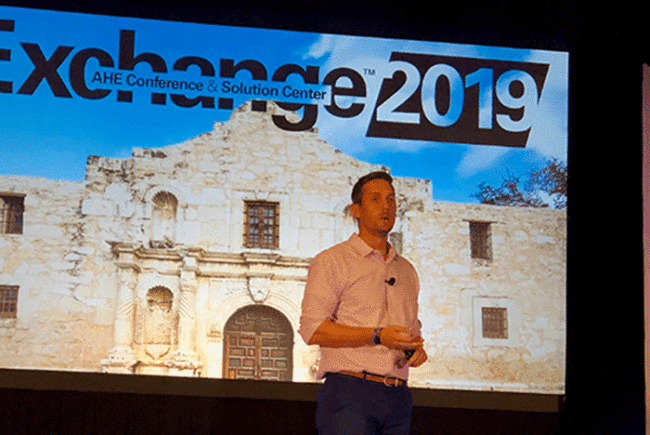Kevin Tuohey, CHPA, president-elect of the International Association for Healthcare Security & Safety (IAHSS), has a straightforward message he regularly conveys to hospital colleagues who will be on the front lines in emergency management situations: The middle of an emergency situation is not the right time to be introducing yourself to the local police or fire chief.
“You need to develop relationships,” Tuohey says. “You need to look at the risks that impact your facilities, whether they are minimal or massive, through the eyes of somebody who is taking care of patients and staff, and you need to look at the risks from the external elements that may impact you.”
Recent events have underscored the importance of this message — from the hurricanes that struck Florida, Puerto Rico and Houston to the mass shooting event in Las Vegas to the strained relationships with law enforcement that occurred after a Utah hospital nurse was arrested for refusing to draw blood from an unconscious patient brought into the facility by the Salt Lake City police.
A new guideline adopted by the IAHSS spells out key areas the organization directs hospitals to address with law-enforcement agencies. The new guideline, Collaborating with Law Enforcement, among other things, calls for a designated employee at health care facilities to establish law-enforcement agency contacts and meet periodically with those contacts to ensure continuity and effectiveness of their relationships. In addition, the guideline directs health care facilities to identify who will serve as the organization’s liaison whenever a law-enforcement agency is on the property and engagement is required.
“You need to talk to law enforcement and the fire departments. You need to understand egress and what’s going on in your area,” Tuohey says. “There should be an ongoing relationship. Health care security should reach out and understand how we can support each other and that we should establish that relationship early and maintain it often.”
A news release from IAHSS also notes that the Emergency Nurses Association reached out to IAHSS and that both organizations support working together to ensure that a situation like that in Utah doesn’t happen again. Tuohey notes that in recent years, the IAHSS also has had regular communications with the American Organization of Nurse Executives and the American Society for Healthcare Engineering of the American Hospital Association about ways to fine-tune guidelines that connect to issues like aggression and violence.
Tuohey believes hospitals and law-enforcement agencies can continue to learn much from each other as the emergencies impacting communities continue to shift.
“We rely on law enforcement to help us sometimes with behavioral patients, prisoners, with disruptive situations that occur, with crimes that happen on our property and investigations, dignitaries and VIPs,” Tuohey says. Conversely, he notes that hospitals can be a significant resource to police and emergency responders who are working to address America’s opioid crisis.
“There are police officers in the field who are dealing with fentanyl and carfentanyl and [drugs] that are toxic to the touch. In health care, we have people who can tell them how to protect themselves in these situations. There are these natural pieces that can help to build relationships and we want to point them out,” Tuohey says.
IAHSS believes hospital leaders can play an important role in this collaboration between health care facilities and law-enforcement agencies.
“From a senior management point of view, it’s saying, ‘Are we doing the best we can do? Do we have the best information and practices and how can I support [our security leaders] in achieving this?’ There is a lot of good that can be achieved in having your boss say, ‘Have you invited the police into a training session?’,” Tuohey says.
The American Hospital Association’s Hospitals Against Violence website also has a wealth of tools that can help hospitals respond to violence in their communities and their facilities. Meanwhile, in August, the IAHSS and Security Industry Association jointly released a white paper titled “Mitigating the Risk of Workplace Violence in Health Care Settings.” And on Oct. 16 at the American Society for Healthcare Risk Management’s annual conference in Seattle, speakers Jim Sawyer and Dan Yaross, representing IAHSS, will discuss the planning and mitigation strategies for any workplace violence event and how to create sound workplace violence policies.





